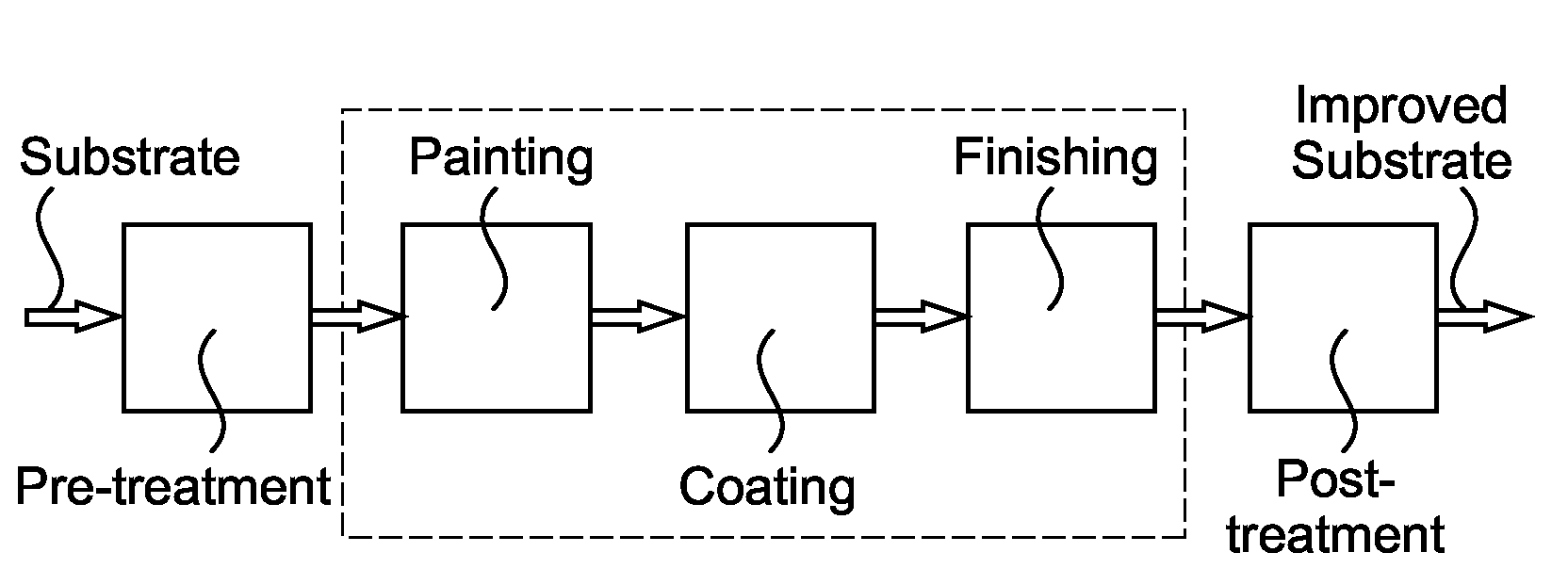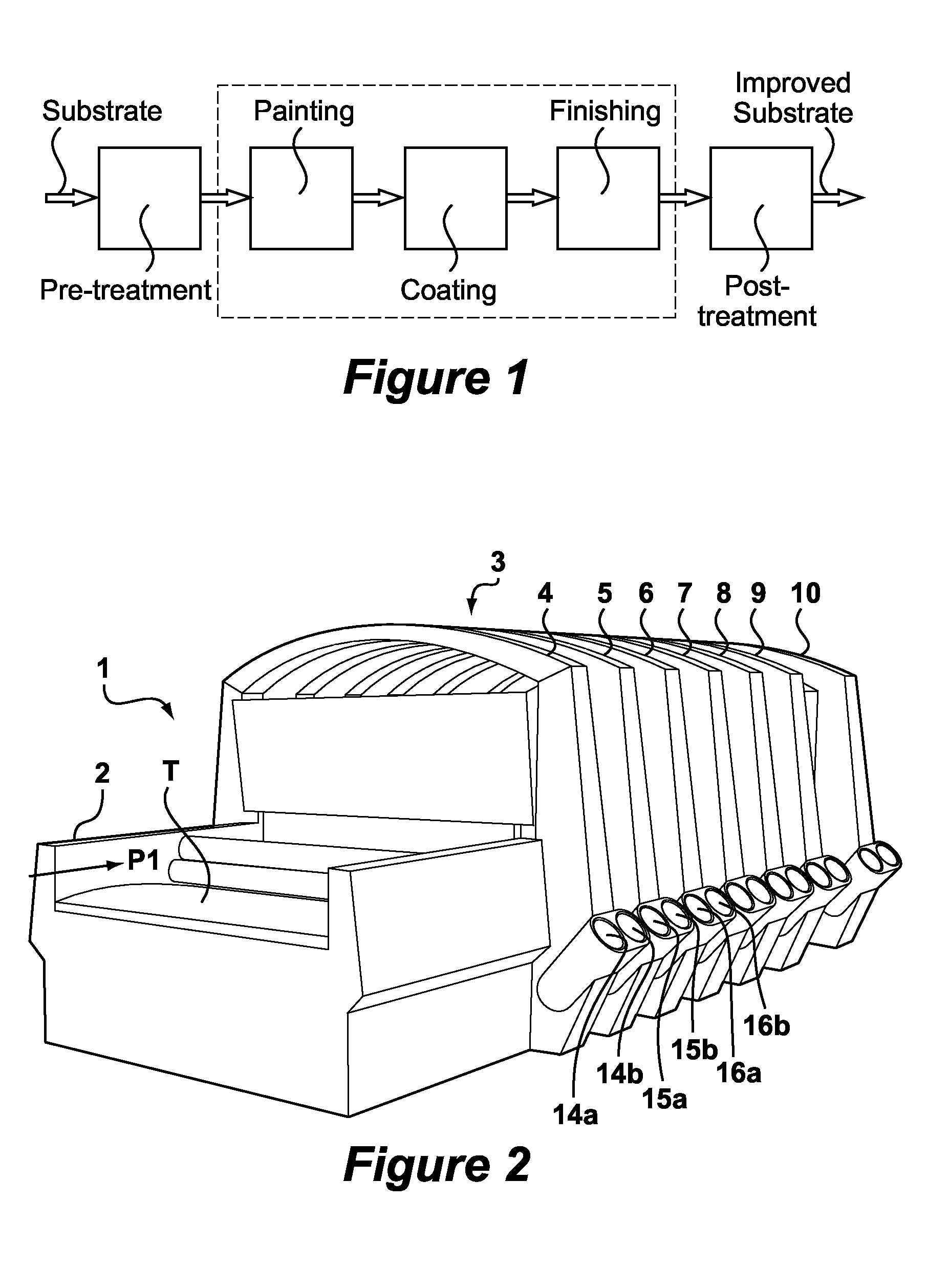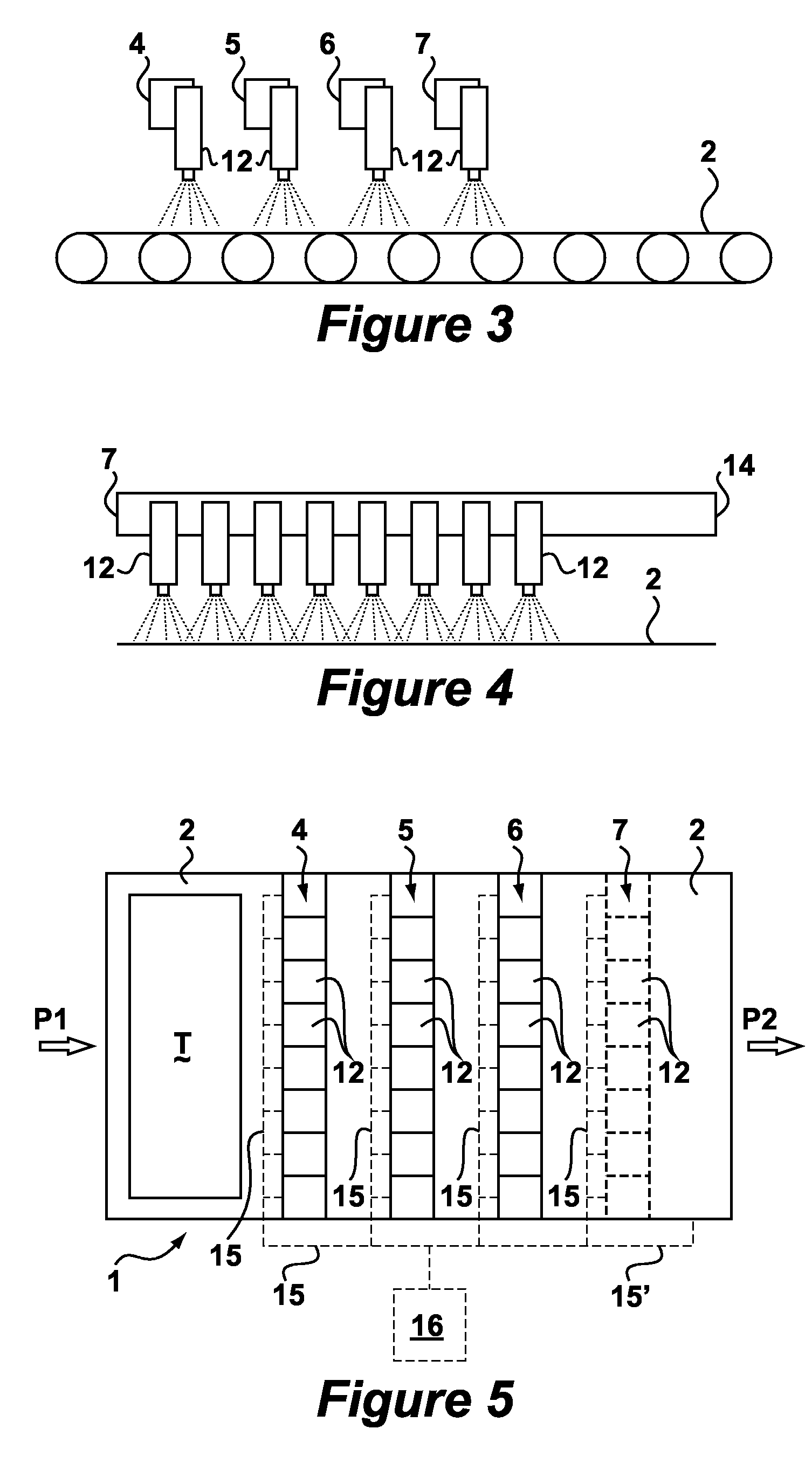Composition for drop on demand finishing of a textile article
a technology for textile articles and drop on demand, applied in the field of textile finishing, can solve problems such as free stretching or distorting, and achieve the effects of improving the solubility of finishing agents and/or their compatibility with other agents, reducing drying energy consumption, and improving operation speed
- Summary
- Abstract
- Description
- Claims
- Application Information
AI Technical Summary
Benefits of technology
Problems solved by technology
Method used
Image
Examples
example 1
[0066]A flame retardant composition Man 10 was prepared as given in the specification shown in Table 1.
TABLE 1Percentage ByMaterialsMan 10Weight (%)Fire-Retardant agentFlammentin KRE5040% solutionBinderPVP K30 (25% in20water) (ISP)HumectantGlycerol (Aldrich)29.6Surfactant10% Zonyl FSA0.3(Dupont)BiocideProxel GXL (ISP)0.1
[0067]The physical properties of the formulation are shown in Table 2.
TABLE 2PropertyMan 10Filtration (200 g)1.0 micron easilyAppearancePale yellow, clear.Low foam.Viscosity at 25° C., cP7.99Surface Tension, dynes / cm31.3Conductivity, mS / cm4.90
[0068]Formulation Man 10 was loaded into a Trident Ultrajet II™ 32 / 96 (faceplate has 32 channels, 3 nozzles per channel) and the formulation primed relatively easily. The jet break up and droplet formation at different drop size settings for formulation Man 10 were captured using a VisionJet Optica™ system, which captures images of drop formation during the jetting process. At a pulse width of 17 μs (the standard setting for thi...
example 2
[0071]In a second proposed exemplary coating procedure according to the present invention, an 1,800 meter long and 1.6 meter wide textile substrate of bleached and dried cotton with a weight of 100 grams per square meter of substrate is subjected to coating with a water repellent coating. The coating is performed in a single process run.
[0072]In accordance with the above, the flame retardant composition would be prepared and deposited as given in the specification shown in Table 3.
TABLE 3PercentageExample 3By Weight (%)UV curable organicDipropylene glycol diacrylate29.70diluent(DPGDA)UV curable organicPropoxylated (2) neopentyl glycol54.80-56.80diluentdiacrylate (SR9003 from Sartomer)UV curable crossDipentaerythritol hexaacrylate3.00linking agent(DPHA)PhotoinitiatorsIrgacure 369:1700:819 1:1:1 (all8.50from Ciba)Water repellentFluoralkylacrylate2.00-4.00agent
[0073]The physical properties of the formulation are shown in Table 4.
TABLE 4Flame Retardant PropertiesViscosity (cP)10PHNot ap...
PUM
| Property | Measurement | Unit |
|---|---|---|
| size | aaaaa | aaaaa |
| size | aaaaa | aaaaa |
| size | aaaaa | aaaaa |
Abstract
Description
Claims
Application Information
 Login to View More
Login to View More - R&D
- Intellectual Property
- Life Sciences
- Materials
- Tech Scout
- Unparalleled Data Quality
- Higher Quality Content
- 60% Fewer Hallucinations
Browse by: Latest US Patents, China's latest patents, Technical Efficacy Thesaurus, Application Domain, Technology Topic, Popular Technical Reports.
© 2025 PatSnap. All rights reserved.Legal|Privacy policy|Modern Slavery Act Transparency Statement|Sitemap|About US| Contact US: help@patsnap.com



